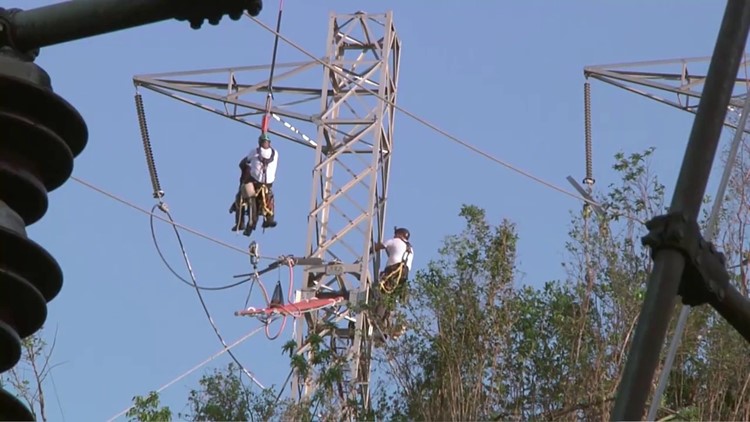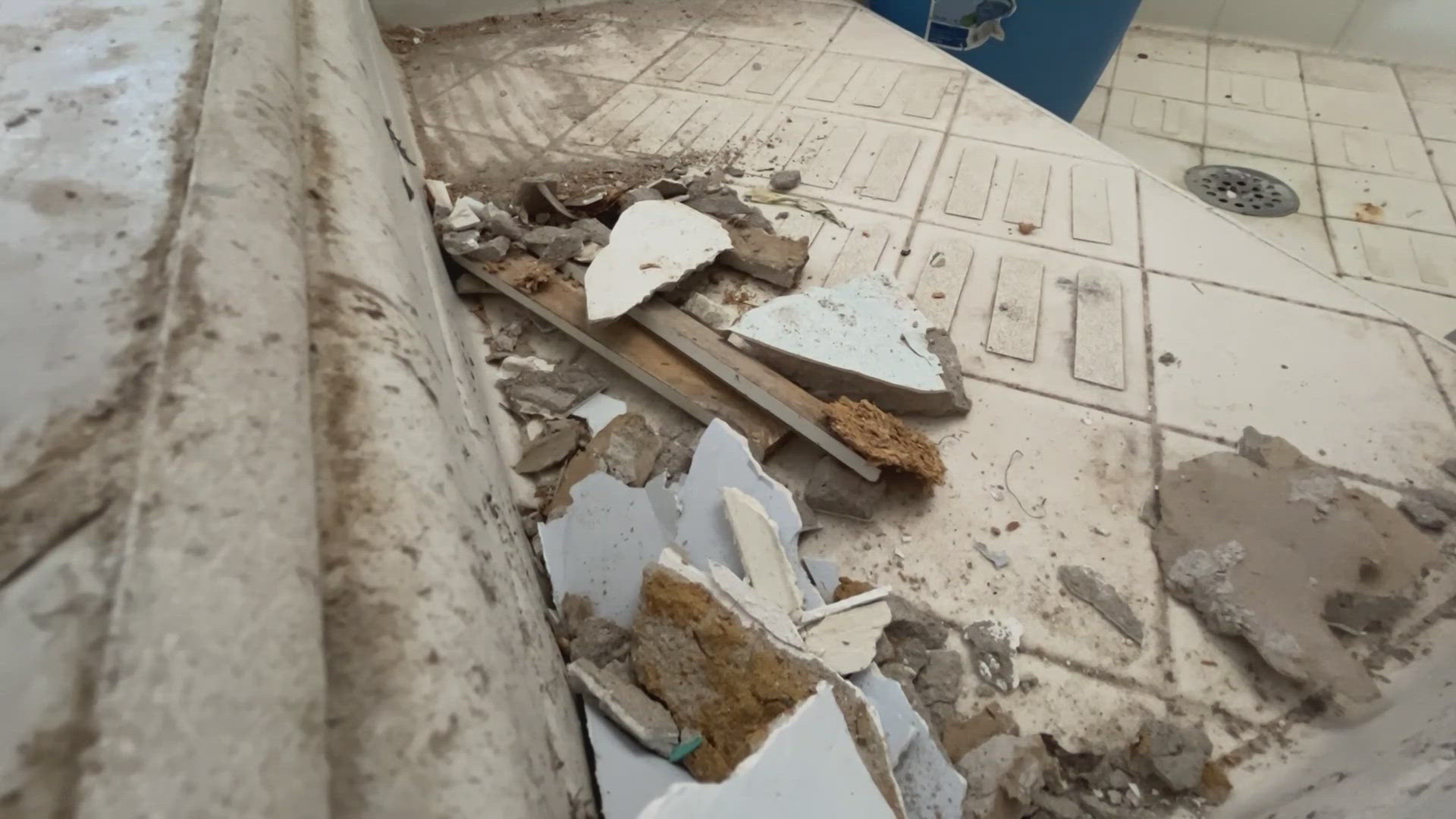HUMACAO, P.R. -- Up in the mountains, pork chops and wine were part of a celebration because Christine Nieves and Luis Rodríguez Sánchez can use their fridge for the first time in eight months.
“It made a sound this morning,” Christine said with a smile. “We still don't know what to do with it.”
They installed solar panels that, for now, only generate enough energy to power their fridge. They got so used to its absence that putting anything in it now seems novel.
“We haven't refrigerated cheese in eight months, first time.” she said. “It's pretty exciting.”
And that small step back to normalcy after Hurricane Maria made landfall makes them the lucky ones in a neighborhood that's still in the dark and where people feel they have no choice but to protest. The night before, Humacao residents had walked the streets with torches, demanding to get power back.
“The people I saw yesterday at the march are everyday people that are tired,” Nieves said. “There's so much suffering that that's why people are getting on the streets.”
It's a suffering that the mayor of a town 30 miles south of San Juan sees first-hand, especially on Fridays, when he meets with his constituents.
“This morning I met with an elderly man who's blind and still doesn't have power,” said Rolando Ortiz, the mayor of Cayey. “And it's sad because we, the mayors, told the governor ‘we want to help, we have the ability, we can do it,’ but they didn't let us.”
Mayor Ortiz says he had brigades and equipment ready to help restore power to people in his town.
“They said ‘no’ because the companies that took the contracts have interests and, if I worked to repair the electric grid, they couldn't charged for that job,” he said.
One of those contracts to help restore power to the island was given to Whitefish Energy, the now infamous company of only two employees linked to the Trump administration. Their $300 million contract was canceled after it came under scrutiny.
10News reached out to Puerto Rico's energy authority (PREPA) and they told us they did offer the mayors an agreement to collaborate, but wouldn't give us a copy of the agreement.
Despite a recovery process riddled with scandals and accusations, in the capital we found an administration intent on seeing the glass half full.
“Now, we have a chance, and what we are doing now is a complete re-design so this doesn't happen again,” Luis G. Rivera Marín, the Secretary of State of Puerto Rico, said.
But the next hurricane season is just over a week away and during our time on the island, we saw plenty of downed power lines and poles.
“I don't want to talk about failures because, certainly, we are in a process of lessons learned,” Rivera Marín said. “You can go to the piers, you can go to old San Juan and we're back in business.”
He's right. Take a walk through San Juan and you might not notice there was a hurricane, but just a short drive away you find people like Anastacio López.
“The people are not a handful of us,” López said. “The people are all of us.”
He was heating up water from his reserve tank on a gas stove so he could take a shower with a bucket. He hasn't had electricity since Maria and water was out again. He's on his second generator to power a fan at night.
“I bought one yesterday for $600 because I know that by 2030 we still won’t have power,” López said.
With hurricane season just around the corner, these Puerto Ricans don’t believe it when their government says it’s ready for the next season, but they’re also not afraid. They've already been through the worst.
“What's going to happen? We're not going to have electricity? We don't have electricity,” Rodríguez Sánchez said.
►Make it easy to keep up-to-date with more stories like this. Download the 10News app now.
Have a news tip? Email desk@wtsp.com, or visit our Facebook page or Twitter feed.



